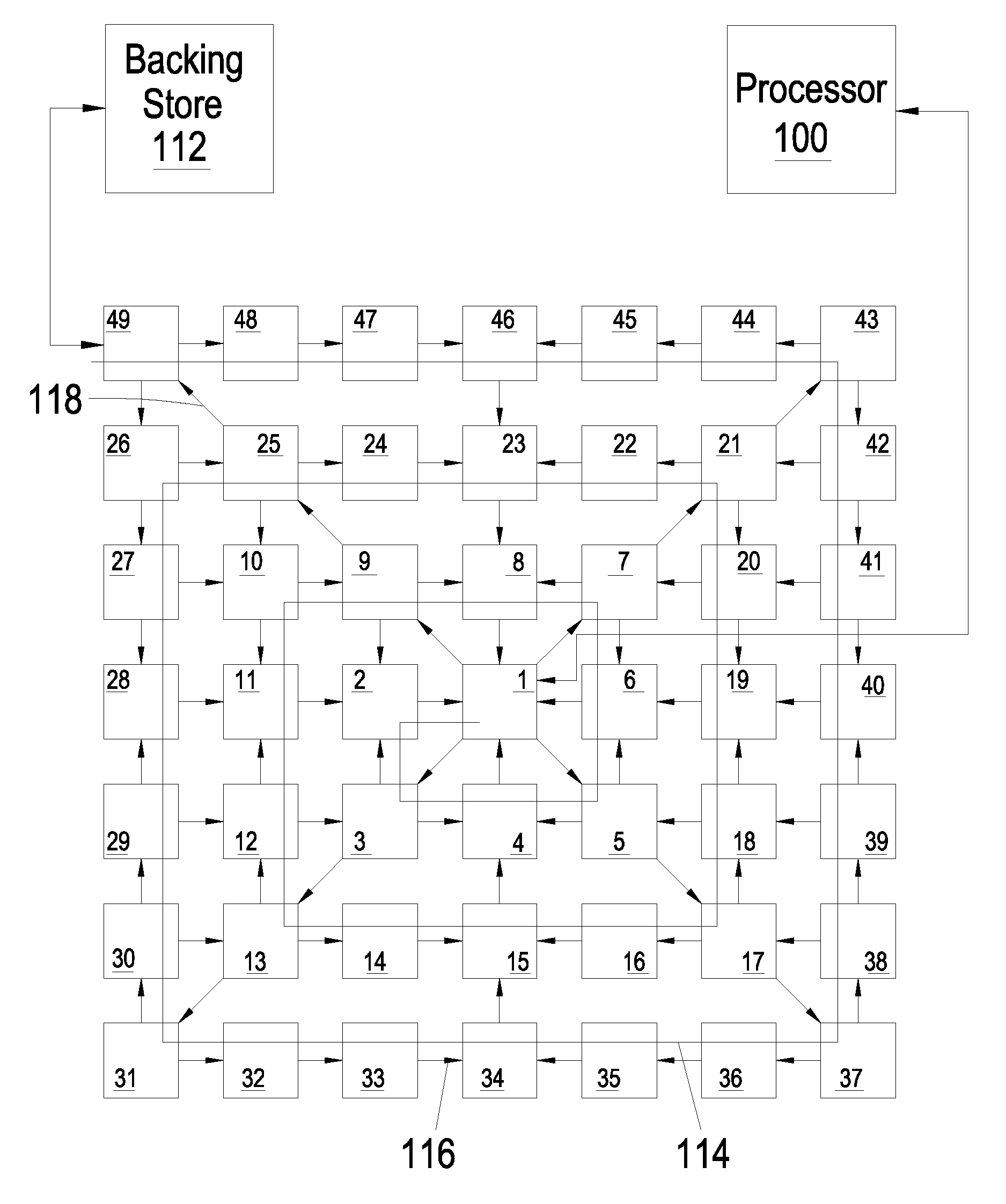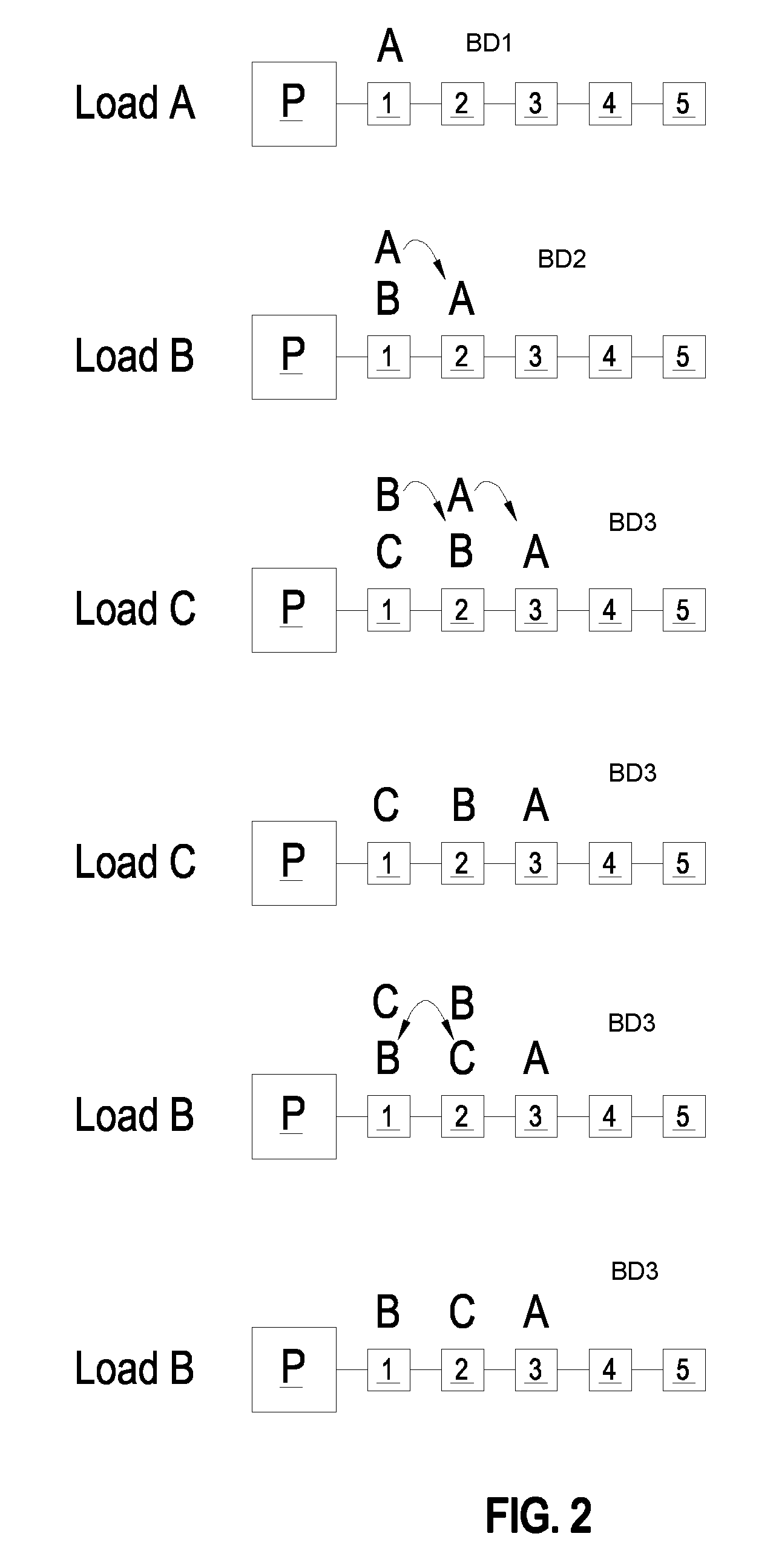Spiral cache power management, adaptive sizing and interface operations
a power management and adaptive sizing technology, applied in the field of cache memories, can solve the problems of increasing power consumption, performance degradation, and the speed at which power management operations can be performed is necessarily slow relative to the rate of data flow
- Summary
- Abstract
- Description
- Claims
- Application Information
AI Technical Summary
Benefits of technology
Problems solved by technology
Method used
Image
Examples
Embodiment Construction
[0024]Introduction The present invention encompasses a memory circuit and method of operation that may be embodied in a cache memory structure that is structurally organized as a spiral and self-organizes its contents to place the most-recently accessed value at the front-most central storage location, while moving other values backwards at each access to a location other than the front-most central storage location. The resulting architecture provides a behavior according to an embodiment of the present invention, which provides each requested value at an interface to a front-most tile of a tiled structure, while making room for frequently requested values by ejecting less frequently requested values to a backing store. The spiral structure also enables power management that reduces power consumption of the memory circuit by partitioning the memory into an active and an inactive portion according to a boundary that may be adjusted on a per-tile basis. The fundamental principle unde...
PUM
 Login to View More
Login to View More Abstract
Description
Claims
Application Information
 Login to View More
Login to View More - R&D
- Intellectual Property
- Life Sciences
- Materials
- Tech Scout
- Unparalleled Data Quality
- Higher Quality Content
- 60% Fewer Hallucinations
Browse by: Latest US Patents, China's latest patents, Technical Efficacy Thesaurus, Application Domain, Technology Topic, Popular Technical Reports.
© 2025 PatSnap. All rights reserved.Legal|Privacy policy|Modern Slavery Act Transparency Statement|Sitemap|About US| Contact US: help@patsnap.com



